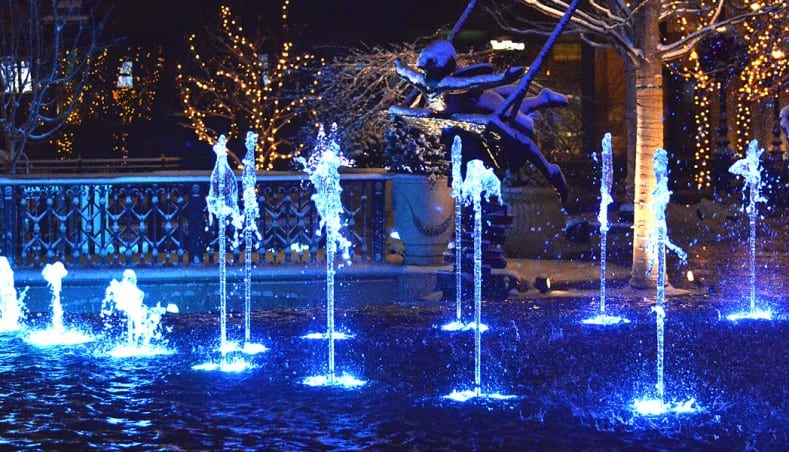Top Ten Things to Consider When Constructing and Operating an Interactive Fountain or Deck
Posted in News -

Visiting an interactive fountain or deck to cool off from the summer heat may seem like child’s play, but it’s anything but if someone walks away with a waterborne disease.
If you’re in the business of designing or building interactive fountains and decks, it’s your responsibility to investigate and adhere to the rules and regulations for building and operating these water features. Outside the Lines thoroughly researches and abides by all government guidelines and requirements, no matter where in the world the project is.
Unlike a show or ornamental fountain, interactive fountains are water features where the public is encouraged, rather than discouraged, to interact with the water. The features are also often referred to as spray grounds.
Interactive water features or decks can be any recreational structure other than a swimming pool or spa pool which is open to the general public or which is semi-public, involving the use of recirculated water with which people come into contact. This may include, but is not limited to, zero depth water features, interactive fountains, water slides, waterfalls, or combinations of such water features.
Keep in mind that water features not intended for human contact, such as ornamental fountains, are not included. In most cases, interactive water features and decks can be found at outdoor malls and shopping centers, adjacent or near local swimming pools and in amusement parks.
Hidden Dangers of Interactive Water Features
Interactive water features that are not properly built and operated can be hazardous to your health.
In recent years, interactive water features have been associated with the transmission of waterborne diseases, such as shigellosis and cryptosporidiosis. These are serious infections that can cause serious illness or death if a person doesn’t seek proper medical attention.
To help protect visitors who play at interactive water features, the state of California has released a list of guidelines for the construction and operation of interactive water features. The guidelines were created by the California Conference of Directors of Environmental Health Recreational Health Technical Advisory Committee.
We think the guidelines are worth sharing, so we’ve included ten from its list of 24 guidelines. You can find the full list by Click Here.
Ten things to Consider When Constructing and Operating an Interactive Water Feature:
- 1. Make sure that all parts of the facility are designed, constructed, maintained and operated so there are no slip, trip or fall hazards or other conditions that may pose a safety hazard.
- 2. Ensure that the splash zone is properly sloped so that only water from the features flows back to the reservoir. Areas adjacent to the splash zone should be sloped away from the collection drains. There should be no plants, vegetation or other safety hazards within the immediate area of the splash zone.
- 3. A continuous clear deck should surround the entire spray pad perimeter. It should be no less than four feet wide. The deck should be of a uniform, easily cleaned, impervious material.
- 4. Hose bibs should be provided to facilitate flushing of the spray pad and deck area.
- 5. Make sure that is no ponding or gathering of water within the splash zone.
- 6. The spray devices should be designed, constructed and installed so that they do not create a safety hazard. Nozzles that spray from the ground level should be flush with the ground, with openings no greater than one-half inch. Spray devices that extend above the ground should be high enough so they can be clearly seen and are not a trip hazard.
- 7. The recirculation pump should be in operation at all times that the spray ground is open for use and a minimum of four turnovers prior to opening for proper disinfection and filtration.
- 8. Provide an adequate number of sanitary facilities. These facilities should include restrooms, showers and drinking fountains. Diaper-changing facilities should be provided at the restrooms.
- 9. The suction intake from the recirculation pump should be located in the lowest portion of the reservoir. An overflow pipe to convey excess water to waste through a suitable air gap should be provided as well.
- 10. Make sure that the facility is provided with one or more signs stating: CAUTION: WATER IS RECIRCULATED. DO NOT DRINK
The California Conference of Directors of Environmental Health Recreational Health Technical Advisory Committee requires that a plan review and approval be conducted by the local health agency having jurisdiction over the spray ground prior to construction. Click Here to download the complete list of guidelines put out by the Technical Advisory Committee as the Guidelines for Construction and Operation of Spray Grounds